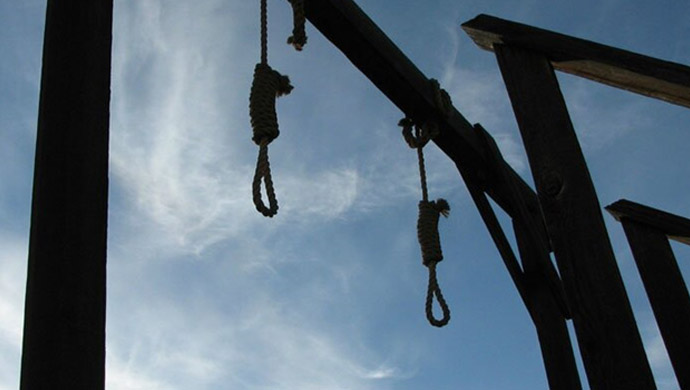Iran’s regime is futilely trying to hide its weakening grip on power at home and its waning hegemony in the region. And to do this, it has resorted to the oldest page in its playbook: ramping up executions and repressive measures against the Iranian population.
The regime has carried out more than 80 executions in the past 20 days. On Monday, May 6, prison authorities in Isfahan’s Dastgerd prison transferred four death row prisoners to solitary confinement in preparation for execution, which was met with the protest of other prisoners. On the previous day, the regime hanged a prisoner in the same prison. In Isfahan alone, 11 prisoners were executed from April 28 to May 5.
The situation is equally grim in other parts of the country. On May 2, the regime carried out five executions in Tabriz and Ardebil. On May 1, the regime hanged 11 prisoners in various cities, including two in Ghezel Hesar Prison in Karaj.
The regime is also making the conditions of prisons unbearable for inmates. According to reports from inside Iran, prisoners in Karaj Central Prison are suffering from skin diseases for months due to the dire health conditions. Regime authorities are denying them treatment and even medicines brought by their families. Reports from Khorramabad prison indicate officers steal medicines brought by the families of the prisoners.
At the same time, the regime is ramping up pressure on political prisoners. The most stark instance is the execution of Anwar Khezri, a Sunni political prisoner who had been in prison since 2009. He has been severely tortured by regime authorities in Urmia Prison to make forced confessions. In March 2016, Khezri and six other Sunni prisoners were sentenced to death by the criminal judge Mohammad Moghiseh on charges of “acting against national security,” “propaganda against the regime,” and “spreading corruption on Earth.” In June 2018, the notorious Judge Abolqassem Salavati reinstated the verdict and the regime’s Supreme Court upheld these sentences in 2019.
Before Khezri, the regime executed four other prisoners in the same dossier, including Farhad Salimi, Davoud Abdollahi, Ayoub Karimi, and Ghasem Abesteh in November 2023 and January 2024.
On May 5, the regime’s so-called Revolutionary Court in Isfahan sentenced political prisoner Mahmoud Mehrabi, 35, to death. The regime’s Aftab News website claimed that during the 2022 anti-regime uprising, Mehrabi “spread content including instructions on using handmade weapons, incited destruction of public property, instigated people to war and massacre, and insulted sanctities.”
On April 28, the regime’s judiciary charged Masoud Jamei, a 47-year-old political prisoner in Sheiban Prison in Ahvaz, of corruption on earth, membership in the People’s Mojahedin Organization of Iran (PMOI/MEK), and conspiracy to overthrow the regime. These are vaguely defined charges that the regime uses to sentence dissidents to death. Jamei, who was arrested in August 2023, is suffering from severe stomach cancer, liver disease, high blood pressure, and severe internal infection, but prison authorities are denying him treatment.
However, the regime’s efforts to control society through an increase in executions has had the opposite effect. The rebellious youths of Iran continue to expand their activities against the regime, targeting the centers of repression and torture. Following the execution of Anwar Khezri, the rebellious youth targeted several regime centers with explosives. And with every execution and death sentence, the people of Iran become more determined in their quest to overthrow the regime.





